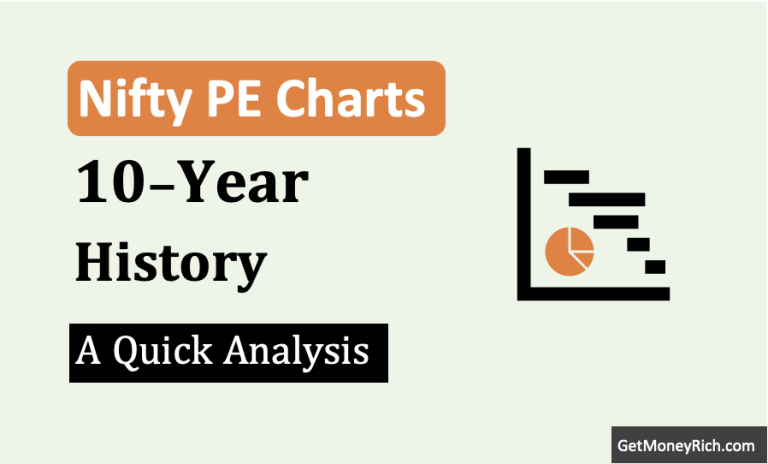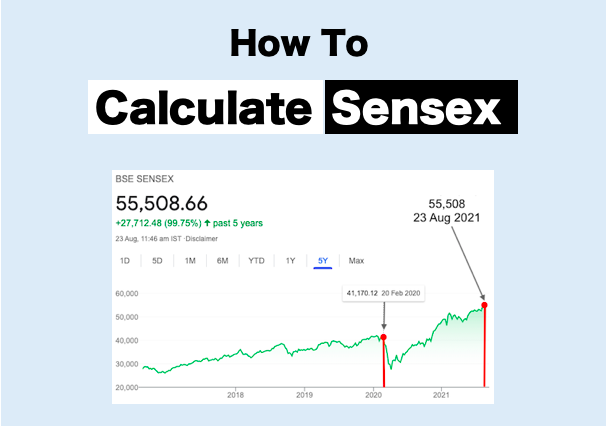The performance of the Nifty 50 index over the past 28 years tells a fascinating story of resilience, growth, and volatility. By analyzing this data, we can uncover valuable insights into the nature of long-term investing, the cyclical trends in stock markets, and the impact of major global and domestic events on equity returns.
Data of Nifty 50 in Last 28 Years
In this article, we delve into the performance of the Nifty 50 index over the past 28 years to uncover actionable insights for investors. To know the weightage of Nifty 50 stocks, read here.
By analyzing historical data, including monthly (December) and 1-Year returns (Jan to Dec), we aim to identify recurring trends. We’ll also try to understand market cycles, and assess the impact of significant global and domestic events on equity markets.
This type of analysis will allow readers to connect short-term market movements, such as December’s frequent negative returns, with long-term growth trajectories.
Using this simple analysis, we will explore patterns in crashes, recoveries, and periods of stability.
This type of data crunching can provide a practical roadmap for us to get deeper understanding of the Indian stock market.
| SL | Date | Nifty 50 Index | December Return (1-Month) | Jan To Dec Return (12-Months) | Remarks |
|---|---|---|---|---|---|
| 1 | 01-Jan-1998 | 963.45 | -10.74% | -0.95% | – |
| 2 | 01-Jan-1999 | 966.2 | 9.27% | 0.29% | – |
| 3 | 01-Jan-2000 | 1546.2 | 4.44% | 60.03% | Bull Market (DotCom Boom) |
| 4 | 01-Jan-2001 | 1371.7 | 8.56% | -11.29% | Crash |
| 5 | 01-Jan-2002 | 1075.4 | 1.54% | -21.60% | Crash |
| 6 | 01-Jan-2003 | 1041.85 | -4.72% | -3.12% | Crash |
| 7 | 01-Jan-2004 | 1809.75 | -3.72% | 73.71% | Recovery Yr-1 |
| 8 | 01-Jan-2005 | 2057.6 | -1.10% | 13.70% | Recovery Yr-2 |
| 9 | 01-Jan-2006 | 3001.1 | 5.80% | 45.85% | Bull Market |
| 10 | 01-Jan-2007 | 4082.7 | 2.93% | 36.04% | Bull Market |
| 11 | 01-Jan-2008 | 5137.45 | -16.31% | 25.83% | Bull Market |
| 12 | 01-Jan-2009 | 2874.8 | -2.85% | -44.04% | Crash (US Mortgage Crisis) |
| 13 | 01-Jan-2010 | 4882.05 | -6.13% | 69.82% | Recovery Yr-1 |
| 14 | 01-Jan-2011 | 5505.9 | -10.25% | 12.78% | Recovery Yr-2 |
| 15 | 01-Jan-2012 | 5199.25 | 12.43% | -5.57% | Consolidation |
| 16 | 01-Jan-2013 | 6034.75 | 2.20% | 16.07% | Consolidation |
| 17 | 01-Jan-2014 | 6089.5 | -3.40% | 0.91% | Sideways |
| 18 | 01-Jan-2015 | 8808.9 | 6.35% | 44.66% | Bull Market (Modi#1) |
| 19 | 01-Jan-2016 | 7563.55 | -4.82% | -14.14% | Brexit |
| 20 | 01-Jan-2017 | 8561.3 | 4.59% | 13.19% | Modi#1 |
| 21 | 01-Jan-2018 | 11027.7 | 4.72% | 28.81% | Modi#1 |
| 22 | 01-Jan-2019 | 10830.95 | -0.29% | -1.78% | Modi#2 – Election Year |
| 23 | 01-Jan-2020 | 11962.1 | -1.70% | 10.44% | Pre-Covid |
| 24 | 01-Jan-2021 | 13634.6 | -2.48% | 13.98% | Covid Year |
| 25 | 01-Jan-2022 | 17339.85 | -0.08% | 27.18% | Recovery- Covid Ph 1 |
| 26 | 01-Jan-2023 | 17662.15 | -2.45% | 1.86% | Covid Phae-2 Crash |
| 27 | 01-Jan-2024 | 21725.7 | -0.03% | 23.01% | Recovery- Covid Ph 2 – Yr1 |
| 28 | 26-Dec-2024 | 23741 | -1.66% | 10.97% | Recovery- Covid Ph 2 – Yr2 |
December Returns in Last 28 Years
One striking observation is the recurring negative returns in December.
- Over the past 28 years, 17 Decembers have closed in the red (negative), amounting to 60% of the years. This trend suggests that December is often a challenging month for investors. Profit-booking at year-end, portfolio adjustments, or external macroeconomic factors could explain this phenomenon.
- Interestingly, despite this trend, the average December return for Nifty 50 has been a modest -0.35%. It is relatively contained considering the index’s high annual volatility.
Calendar Year Returns in Last 28 Years
Now, let’s look at the yearly trends.
- The Nifty 50 has posted negative 1-year returns in only 8 out of 28 years. This demonstrates an impressive track record of long-term positivity.
- However, in years when the annual return has been negative, December often mirrored this sentiment, with five out of those eight years also showing a negative December performance. This correlation indicates that poor market performance across a year often culminates in a lackluster December, reflecting ongoing bearish sentiments.
- The Nifty 50’s resilience shines through in its long-term growth. The average 1-year return of 15.24% over 28 years is a testament to the power of compounding and the Indian economy’s overall strength.
- The data also reveals that, out of 28 years, 17 years witnessed annual returns (return between January to December) exceeding 15%. It shows that markets tend to reward investors who remain committed during periods of uncertainty.
- It’s notable that even in years with strong annual returns, December’s performance was positive in only 8 instances, suggesting that December is usually a profit booking month for share market participants.
Historical Crashes Between 2007 and 2024
Historical crashes provide valuable lessons for investors.
- The dot-com crash in 2001-2002 saw back-to-back annual declines of -11.29% and -21.6%.
- Similarly, the US mortgage crisis in 2008-09 led to a staggering -44% drop, shaking investor confidence.
- More recently, the Brexit referendum in 2015-2016 triggered a correction of -14.14%.
- Yet, what stands out is how quickly the markets rebounded from these crises. For instance, after the 2008 crash, the index posted a remarkable 69.82% return in 2010. It underlines the market’s capacity for recovery and growth after severe downturns.
- The COVID-19 pandemic offers another example of market resilience. While the pandemic caused one of the sharpest corrections in market history in March 2020, the Nifty 50 ended the year with a solid 13.98% return.
- The subsequent years, 2021, 2022, and 2023, continued the recovery, posting 1-year returns of 27.18%, 1.86%, and 23.01%, respectively.
- This period reflects the adaptability of both businesses and investors in navigating unprecedented global challenges.
- The pandemic-era performance underscores the importance of staying invested during crises rather than succumbing to panic-driven selling.
FII Selling in 2024
- In 2024, even amid significant Foreign Institutional Investor (FII) outflows starting in October, the Nifty 50 managed a respectable 1-year return of 10.97%. This highlights the growing role of domestic institutional investors and retail participants in stabilizing the Indian markets.
- It also shows that the Indian economy has matured to the extent that it can weather global uncertainties while continuing to deliver reasonable returns.
Final Words
What does all this mean for investors?
First, long-term investment remains the most effective strategy for wealth creation. Short-term volatility, whether seasonal (as observed in December) or event-driven (as during global crises), should not deter disciplined investors. The Nifty 50’s growth trajectory over 28 years, from 963.45 in 1998 to 23,741 in 2024, demonstrates the potential of staying invested in equity markets.
Second, understanding market cycles and external influences can help investors better manage expectations. Crashes, while painful, often present opportunities for those with the foresight to remain invested or add to their portfolios.
Lastly, domestic market resilience, as observed in recent years, reflects the strength of the Indian economy and its ability to adapt to evolving challenges.
The journey of the Nifty 50 index over nearly three decades underscores the value of patience and long-term vision in investing.
While short-term trends like December’s recurring negativity or sudden global shocks can make headlines, it is the larger picture that truly matters.
For investors, the key takeaway is clear: focus on long-term goals, trust in the market’s ability to recover, and remain committed through the cycles of volatility and growth.
If you found this article useful, please share it with fellow investors or leave your thoughts in the comments below!
Have a happy investing.





![Sensex 30 Companies: Their Weightage in The Index [2025]](https://ourwealthinsights.com/wp-content/uploads/2022/03/Sensex-Weightage-Stocks-Thumbnail2-768x392.jpg)
